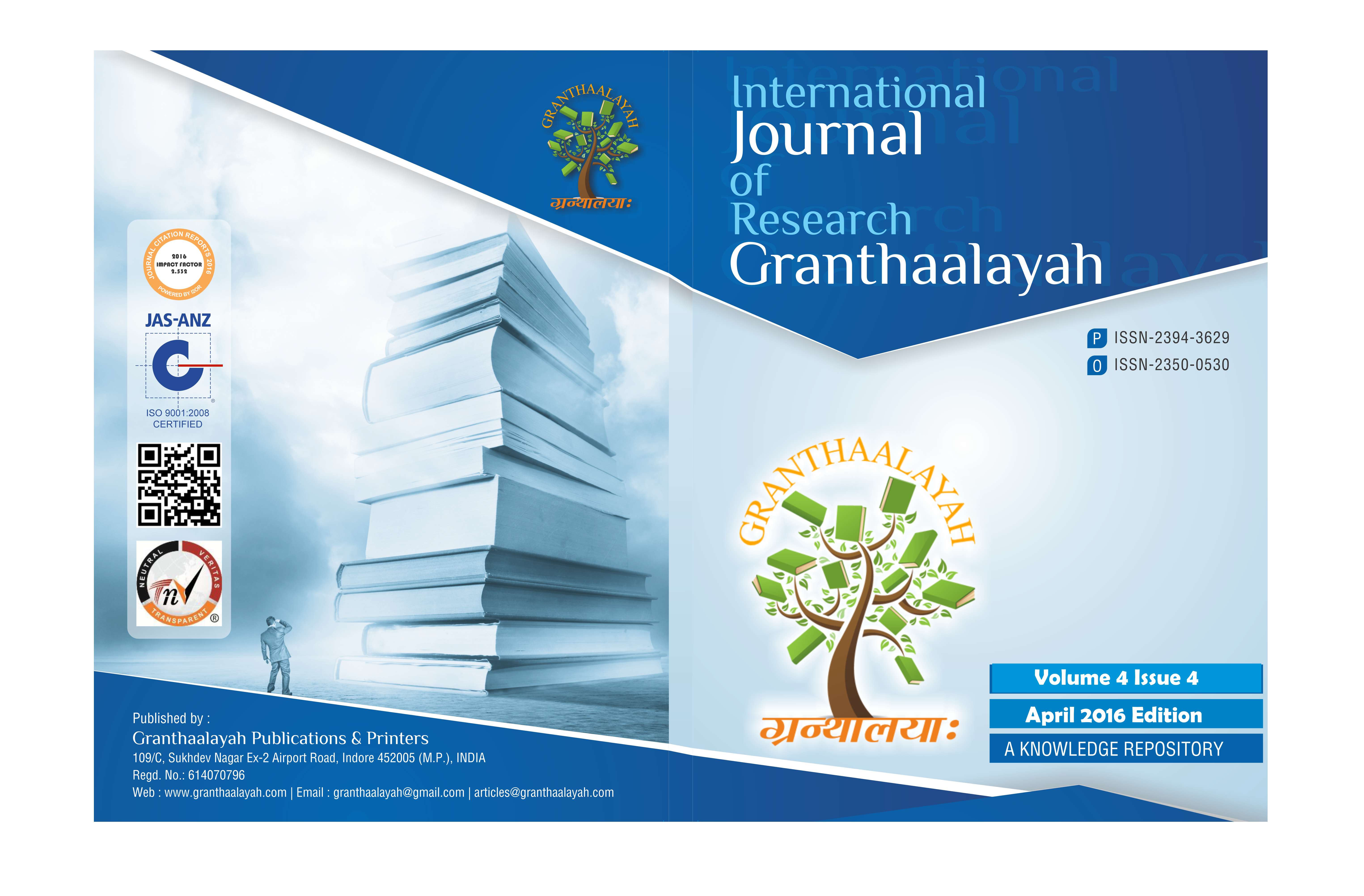INVESTIGATING THE ROLE OF KNOWLEDGE MANAGEMENT AS A TOOL FOR ENHANCING INNOVATION AND CREATIVITY IN ORGANIZATIONS
DOI:
https://doi.org/10.29121/granthaalayah.v4.i4.2016.2758Keywords:
Knowledge Management, Innovation, Creativity, Competitive Advantage, OrganizationsAbstract [English]
According to modern management literature in the fields of innovation and creativity, it is vital for organizations to innovate to keep up with increasing competition, consumer demands and emerging market fields. Here is where the role of knowledge management is highlighted as a potential key competitive advantage. This paper brings together knowledge from various areas to show that innovation is a form of organizational advantage which can be obtained by appropriate knowledge management. Focus is made the role of knowledge management in sustaining and enhancing creativity in organizations. The simulation of creativity and the allocation of resources for creative thinking methods for employees are also of vital importance. Thus, in the current corporate world, the utilization of knowledge management as a tool for enhancing creativity and innovation will present a competitive edge for organizations.
Downloads
References
Barclay RO, Murray PC, 2006. What is Knowledge Management. N Engl J Kmw. 10:49-60.
Beckman, T.J. (1999), “The current state of knowledge management”, in Liebowitz, J. (Ed.), Knowledge Management Handbook, CRC Press, Boca Raton, FL.
Bunnell, D. (2000) Making the Cisco Connection — The Story Behind the Real Internet Superpower. New York: America
Coleman, D. (1999), “Groupware: collaboration and knowledge sharing”, in Liebowitz, J. (Ed.), Knowledge Management Handbook, CRC Press, Boca Raton, FL.
Drucker, P. (1985), Innovation and Entrepreneurship, Heinemann, London.
Drucker, P.F. (1998), “The coming of the new organization”, Harvard Business Review on Knowledge Management, Harvard Business School Press, Boston, MA.
Gloet, M. and Terziovski, M. (2004), “Exploring the relationship between knowledge management practices and innovation performance”, Journal of Manufacturing Technology Management, Vol. 15, No. 15, pp. 402-409. DOI: https://doi.org/10.1108/17410380410540390
Goffin, K. and Mitchell, R. (2005), Innovation Management: Strategy and implementation using the pentathlon framework. 2nd Edition, Palgrave MacMillan, Fith Avenue New York, NY.
Handy, C. (1976), Understanding Organizations, Penguin, Harmondsworth.
Häcki, R. &Lighton, J. (2001) the future of the networked company. The McKinsey Quarterly, 3, 26–39
Hedlund G. 1994. A model of knowledge management and the N-form Corporation. Strategic Management Journal 15: 73±90. DOI: https://doi.org/10.1002/smj.4250151006
Hedlund G, Nonaka I. 1993. Models of Knowledge Management in the West and Japan. In Implementing strategic processes, change, learning and cooperation. Lomange, B (ed.), 117±144, Macmillan: London.
Liao, S., Wu, C., Hu, D., and Tsuei, G. (2009), “Knowledge acquisition, absorptive capacity, and innovation capability: an empirical study of Taiwan‟s knowledge-intensive industries”, World Academy of Science, Engineering and Technology, Vol 53, Pp160-167.
Liebowitz, J. (Ed.) (1999), Knowledge Management Handbook, CRC Press, Boca Raton, FL.
Liebowitz, J. and Beckman, T. (1998), Knowledge Organizations: What Every Manager Should Know, St Lucie Press, Boca Raton, FL.
Matusik, S.F. and Hill, C. (1998), “The utilization of contingent work, knowledge creation and competitive advantage”, Academy of Management Review, Vol. 23 4 October. DOI: https://doi.org/10.2307/259057
McCune, J.C. (1999), “Thirst for knowledge”, Management Review, April.
Miller, W. (1999), “Building the ultimate resource”, Management Review, Vol. 8 No. 2.
Moore, K. and Birkinshaw, J. (1998), “Managing knowledge in global service firms: centers of excellence”, Academy of Management Executive, Vol. 12 No. 4 November. DOI: https://doi.org/10.5465/ame.1998.1333973
Nonaka, I. (1991), “The knowledge creating company”, Harvard Business Review, November/December.
Nonaka, I. and Takeuchi, H. (1995), The Knowledge Creating Company: How Japanese Companies Create the Dynamics of Innovation, Oxford University Press, New York, NY. DOI: https://doi.org/10.1016/0024-6301(96)81509-3
Perez E, 1999. Knowledge Management in the Library not, N Engl J Dm. 2: 75–78.
Quintas P, Lefrere P, Jones G. 1997. Knowledge Management: a Strategic Agenda. Journal of Long Range Planning 30: No. 3, 385±391.
Stewart, T. (1997), Intellectual Capital: The New Wealth of Organizations, Nicholas Brealey, London.
Downloads
Published
How to Cite
Issue
Section
License
With the licence CC-BY, authors retain the copyright, allowing anyone to download, reuse, re-print, modify, distribute, and/or copy their contribution. The work must be properly attributed to its author.
It is not necessary to ask for further permission from the author or journal board.
This journal provides immediate open access to its content on the principle that making research freely available to the public supports a greater global exchange of knowledge.

























